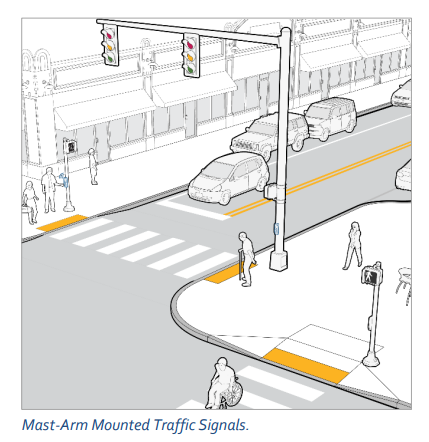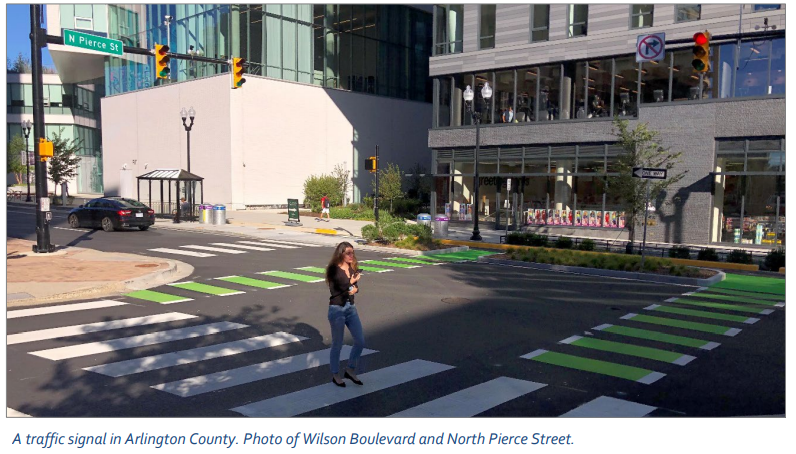Traffic Signals
Purpose
Manage traffic flows at intersections and throughout the street network. Modern traffic signals are coordinated from a centralized location and can be adjusted to respond to changing conditions.
Description
Traffic signals are tools that assign right of way to the various traffic movements at an intersection, which include vehicles, pedestrians, bicyclists, and shared mobility users. Traffic signals should only be installed at intersections that meet the warrants established in the Manual on Uniform Traffic Control Devices (MUTCD) because the warrants provide guidance on the safest conditions for installation. Traffic signals directly influence the quality of a transportation system, including delays, compliance, safety, and mode choice. Signal coordination involves adjusting multiple traffic signals along a corridor to achieve the operational and safety goals of the corridor.
Safety Benefits
- Traffic signals can control or reduce the number of conflicts by determining which movements can occur simultaneously and which should be separated.
- Traffic signals provide predictable gaps in traffic that facilitates safer turns and intersection crossings for road users.
Street Types and Context
Applicable Street Types
All street types where the Manual on Uniform Traffic Control Devices (MUTCD) signal warrants are met. Signals may be warranted based on overall vehicular volumes, a lack of gaps in traffic on major roads, pedestrian crossing volumes, and/or crash history. Section 4B.03 of the MUTCD Advantages and Distadvantages of Traffic Control Signals provides further detail about the disadvantages and risks associated with traffic control signals when poorly designed or ineffectively placed.
Other Location Guidance
- The spacing between signalized intersections varies and is an important consideration in determining the feasibility of a location.
- Installing a signal is a major investment with ripple effects on surrounding streets and intersections.
Primary User Groups

Key Implementation Considerations
- The placement, timing, and operations of traffic signals should closely align with Arlington’s policy goals and objectives relating to roadway operations and safety.
- The design of new traffic signals can be challenging due to a variety of considerations.
- To accommodate pedestrians with vision impairments, signals need to be accompanied by an audible signal to indicate the WALK interval.
Expected Crash Reduction
Installation of a basic set of signals and signage improvements have been found to have a 30% reduction in crashes (FHWA, 2020).
Cost

Installing new or upgrading old signals typically costs over $600,000. Traffic signal operations are costly on an annual basis as well. Traffic timing is reviewed and adjusted every three years.
Timeline

Two to five years, depending on the complexity of the design, availability of right-of-way, and funding.
References
